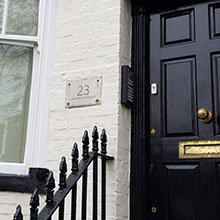
Mastering Client Retention
Proven Strategies for Service Businesses to Boost Loyalty and Growth
As another new year dawns, many businesses use this time to take stock of their position and assess their goals for the months ahead. This may well be the case for your business, but it can also be the case for your clients. Service businesses reliant on retained work from a roster of loyal clients could find this time of year potentially quite daunting. As clients review their business’ performance over the past 12 months and start to scrutinise their expenditure with a new financial year on the horizon, it’s natural for thoughts to turn to whether full value is being leveraged from existing partnerships. If your business provides a service to a company wondering where costs could be cut, you need to be top of the “do not cull” list!
Mastering client retention is not merely a strategy but a necessity for fostering growth and ensuring long-term success. When it comes to client churn, businesses need to be aware of their client retention rates and whether this is fluctuating over time. When retention rates start to drop, the focus must shift from simply acquiring new customers to nurturing existing ones. This is why understanding the importance of retaining clients is so crucial, as it not only enhances customer lifetime value but also reduces the costs required to acquire new customers.
With this post we’ll delve into some proven client retention strategies, whilst highlighting the significance of recognising warning signs of client dissatisfaction and proactively addressing them. By exploring techniques to keep clients loyal, service businesses can strengthen their customer relationships and better manage retention of those accounts that matter most. Because if your business wants to see growth in 2025, it’s going to need to build on what it has already, rather than winning new business to merely replace that which it has lost!
Building Strong Client Foundations
The Importance of Onboarding
Critical in setting the stage for successful client relationships and improving customer retention rates will be an effective onboarding strategy. A well-structured onboarding process not only ensures that new clients feel welcomed but also helps to set clear expectations from the outset, not just for your client but for your own team working on the account.
Obviously onboarding will vary by industry type and the deliverables you set but as a general rule providing comprehensive details on what you intend to do for the client and how they can utilise your service to its fullest potential should be a starting point. If you have the staff, assign a dedicated account manager who can serve as a consistent point of contact, at least during the initial phase. This personalised approach helps foster trust and facilitates open communication, allowing any potential issues to be addressed promptly.
You can also make use of software to streamline the onboarding process, using CRM tools to help ensure that customer queries are handled efficiently and taking advantage of project and task management applications to check off all essential onboarding tasks every time a new client signs up. By investing in onboarding excellence, businesses can increase customer satisfaction and retention to create a loyal customer base that values the relationship from the very beginning.

Managing Client Expectations
Failing to successfully manage client expectations can lead to a loss of value from your work by overdelivering or, worse, leave your customer feeling unappreciated and likely to leave. Managing client expectations is pivotal in nurturing robust business relationships and improving customer satisfaction.
From the outset, it is essential to communicate clearly about what clients can expect from your company. This involves being transparent about timelines, deliverables and any limitations that may exist. You can combine this as part of your onboarding process, perhaps setting up automated tasks to have your team share the set deliverables for each particular project when you kick off.
It’s always better to underpromise and overdeliver than the other way around so don’t fall into the trap of overselling what’s possible or realistic in order to simply tell the client what they want to hear. Most loyal customers are far more likely to appreciate honesty and don’t forget that your contact at the client company may be reporting back to their higher ups so if you’re setting unrealistic expectations, they’ll feel the pressure if deadlines are missed or specific results aren’t achieved just as much as you will.
Establishing a communication framework is vital, as it ensures that clients are kept informed throughout their journey. Regular updates, whether through meetings, emails, or client portals, help maintain transparency and trust. It’s also crucial to listen actively to customer feedback and be open to adjustments, demonstrating a commitment to meeting customer expectations. Employing digital tools for client retention can aid in tracking progress and identifying areas where communication can be improved. By effectively managing client expectations, businesses can reduce the likelihood of misunderstandings and enhance customer retention, fostering a strong foundation for long-term collaboration.
Communication Frameworks for Success
Establishing effective communication frameworks is essential for nurturing client relationships and ensuring business growth. These frameworks provide a structured approach to how and when communication occurs, making sure that the client’s needs are met efficiently. You’ll want to set clear guidelines on the preferred channels of communication, whether it be email, phone calls, online meetings, messaging tools or even via a dedicated client portal. Though of course this should be as much about understanding the client’s preferences as it is about laying out how your business tends to work.
It is also vital to establish regular check-in meetings to keep clients informed about progress and developments, and to offer them a forum in which to provide feedback on your work or share relevant business updates. This not only builds trust but also allows for the prompt resolution of any issues that may arise.
Communication breakdown is one of the most cited reasons for clients choosing to end their contract with a service business which is why it’s so critical to get on top of preferred comms channels and expectations for frequency of progress updates as soon as possible. Once you are comfortable with a client and their expectations you can better determine whether they require daily or weekly emails or whether they might prefer a regularly scheduled call or meeting to cover off each week or month’s key discussion points at once. Everybody works differently and where one client may expect you to be available on the regular for them to call and speak with your team at their convenience, another may require a more hands off approach, not wanting to be interrupted outside of pre-agreed call or meeting times.
It’s worth noting also that where you may be dealing with numerous different members of a company’s internal team, they may each have their own individual preferences to be aware of. For instance maybe their marketing manager prefers to address issues on an ad-hoc basis via an instant messaging tool like Slack, for swift resolution, whereas the same technique could fail with the product manager whose own preference is to have issues and queries detailed in an email they can respond to at a set time or even via their own task management tools. Some people use their inbox as a to-do list so if you’re not in there you may find you’re not getting a response, but at the same time others may find too many emails overwhelming and would sooner set aside time to run through tasks and outcomes all in one go on a weekly or monthly basis.
This is where you can leverage customer data to personalise interactions, tailoring your communication to the specific needs and preferences of each client. A good customer relationship management (CRM) system can help streamline your interactions, ensuring consistency and reliability, without trying to reach people via channels they prefer not to use. Just remember to keep your CRM updated with all the information you have on each client and the team members you work with.

Enhancing Client Relationships
Personalised Communication Techniques
In the same way as understanding your clients’ personal communication method and frequency preferences, personalised communication techniques are crucial for fostering strong client relationships and ensuring customer loyalty. You should tailor interactions to each client’s specific needs and preferences, which will make customers feel valued and understood.
Once again, a good CRM is a huge help here, allowing you to work with all your existing customer data to segment your client base, enabling targeted messages that resonate with different groups. Address clients by name in all communications and reference past interactions to demonstrate familiarity and attentiveness. If a client is contacted by different members of your team, they should be able to refer to past notes in the CRM system in order to be fully across all previous interactions, as well as understanding their preferences and any other pertinent points (record major events they may tell you about such as marriages, moving home or recent holidays etc. to help with building familiarity and trust).
With mass communications you can tailor content to each client’s industry or unique challenges, offering relevant solutions or insights as appropriate. As an example if you work with an accountancy firm you could reference recently announced changes to tax rates in your comms with them and potentially suggest ways in which to help them share with their own clients how they are prepared for this and can support those impacted by the changes.
Regularly soliciting and incorporating customer feedback into your communication approach can further enhance client satisfaction. After all this is free advice and can really help you build a loyal customer base that sees your company as a true partner in their success.
Regular Check-Ins and Feedback
As touched on above, regular check-ins and feedback are vital components in maintaining and enhancing client relationships. These interactions provide an opportunity to address any concerns, evaluate progress and reinforce the value of the services you’re providing. Scheduling periodic catch-up calls and meetings demonstrates a commitment to the client’s success, fostering trust and open communication.
These meetings should be structured to review objectives, discuss any challenges and identify potential improvements, whilst being conscious of the client’s time (not to mention your own). Some clients will run a militantly precise schedule meaning that you’ll want to ensure your meeting can be completed in the time stated, whereas other clients may prefer you dedicate more time to them and actually prefer to let meetings overrun depending on how much they want to question or contribute.
Collecting customer feedback during these sessions is essential for understanding client needs and expectations. Implementing customer feedback loops enables businesses to act on insights, showing clients that their opinions are valued and taken seriously. Utilising customer surveys or digital communication tools can streamline the feedback process, ensuring timely and relevant input. Though impersonal automated feedback surveys won’t often yield great results unless you have an angry or upset customer eager to vent their frustration. Sometimes a more personal question direct to the client enquiring as to whether they prefer meeting format A or B, for example, will be more valuable than 20 feedback forms sent out via email.
The Role of Exceptional Customer Service
It should be no surprise that high quality customer service is one of the leading weapons in your arsenal for combatting client churn. Delivering support that not only meets but exceeds customer expectations is paramount, creating a positive customer experience that actively encourages loyalty. A proactive approach is key; anticipate customer needs and address potential issues before they escalate.
If you have a customer service team, empower them with the tools and training necessary to provide timely and effective solutions. Personalising interactions by acknowledging customer history and preferences further enhances the experience (remember to keep that CRM updated). Additionally, swift resolution of customer queries and issues demonstrates commitment to customer satisfaction.
If you’re not at the scale where you have a dedicated customer service team, you can still set standards by which anyone in your team that interacts with clients should be adhering. Holding regular training sessions on the way you expect staff to engage with your clients can help ensure a consistently high quality of service delivered.

Innovative Retention Strategies
Loyalty Programmes for Clients
Though not necessarily relevant to all service industries, many businesses find that by rewarding repeat customers and providing incentives that encourage them to remain loyal to your brand, retention becomes a great deal easier. Obviously a web design agency isn’t going to dish out coffee shop style loyalty cards for stamping but there are still plenty of other ways in which to encourage and reward loyalty.
For some firms, account management or client satisfaction teams will be entrusted with keeping clients loyal but not every firm will have a dedicated department for this. However even smaller businesses can still provide strong incentives to the clients they’re keen to keep. It may be as simple as sending a thoughtful gift at Christmas time or it could be that you invite the client staff you work with to events and functions they’d enjoy, whether that’s taking them for a meal or having them join you at a relevant industry convention.
You might also look at offering financial incentives or discounts on services in return for client referrals to help you grow your business. Provided you’re doing a good job, this benefits both parties and can help you retain an edge in situations where rival firms may be courting your client.
Just don’t confuse incentivising loyalty with outright bribery. The best way to retain customers is by consistently delivering results and providing excellent service.
Packaging Services for Added Value
Another effective strategy to enhance customer loyalty and increase customer retention rates is to package services for added value. By bundling complementary services together, businesses can offer a more comprehensive solution that meets a broader range of client needs. This not only enhances the perceived value of your offerings but also encourages clients to engage more deeply with your brand.
For example, a business might offer a discounted rate for clients who opt for a package that includes multiple services, thus incentivising them to utilise more of what you offer. Such packages can be tailored to specific customer segments, ensuring they address unique requirements and preferences.
IT support company? Why not upsell hosting and email management as part of your service contract, bundling it together for a better value package overall? There are many ways of offering more, to earn more, whilst giving the client a sense of receiving greater value for money.
Digital Tools for Client Retention
We’ve previously looked at some of the most valuable software tools for SMEs but chief among them when it comes to client retention has to be Customer Relationship Management (CRM) systems, essential for storing and analysing customer data, helping identify trends and tailoring interactions to individual client needs. You’ll find our top picks for CRM software here.
Automation software can also play a critical role in maintaining regular communication with clients, ensuring they feel valued without burdening your team to remember to check in or follow up on various communications. For instance, automated email campaigns can provide personalised updates or reminders that keep customers engaged. Additionally, the best project management tools can help track client interactions and ensure that service delivery aligns with customer expectations. By employing these digital tools, businesses can not only improve the efficiency of their client retention strategies but also enhance overall customer satisfaction and loyalty. Ultimately, these tools empower service businesses to build long-lasting relationships and drive sustainable growth.
Call on 01273 917977 or complete our enquiry form
enquire book a viewing

